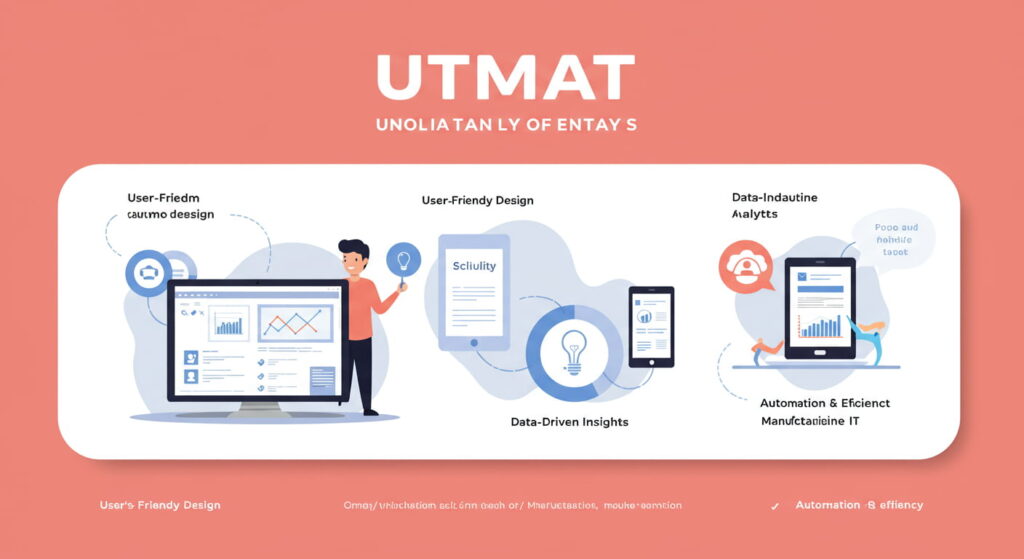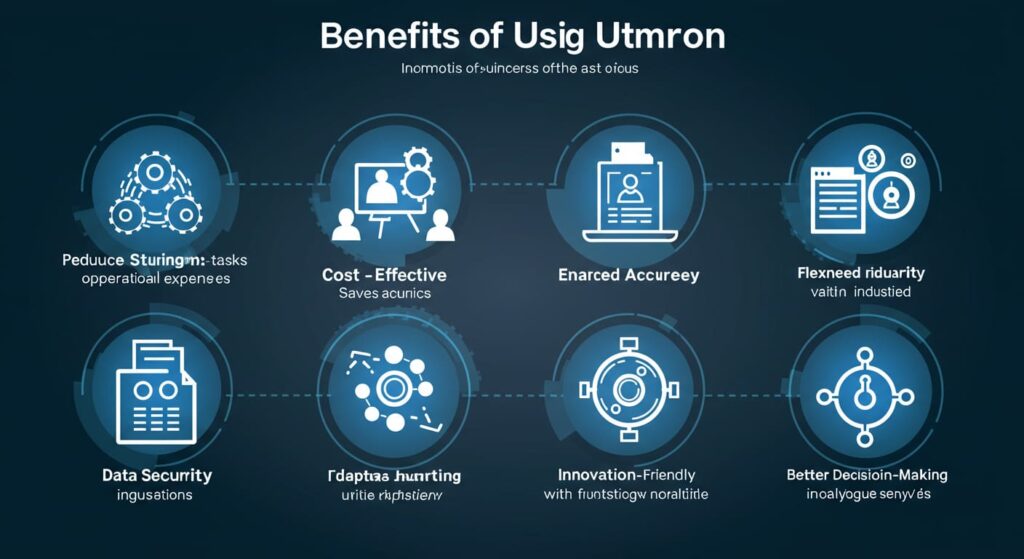In today’s fast-paced digital and industrial world, new technologies, platforms, and tools are constantly emerging. One such term that is gaining attention is Utmat. While the word may sound new, its significance lies in how it connects innovation, technology, and usability across different industries. Unlike many short-lived digital trends, Utmat has the potential to become a long-term foundation for growth and transformation.
The appeal of Utmat comes from its versatility and adaptability. It is not limited to one industry but stretches across education, business, healthcare, and IT. In education, Utmat supports smarter classrooms and digital learning environments. In business, it streamlines workflow and boosts productivity.
Healthcare professionals rely on Utmat-inspired systems for managing sensitive data and improving patient care. Even in manufacturing, Utmat offers automation that reduces waste and enhances efficiency.
Another reason why Utmat is gaining attention is its ability to blend human creativity with machine intelligence. It not only automates repetitive tasks but also provides valuable insights for better decision-making. This makes Utmat a powerful tool for professionals who want to stay ahead in an increasingly competitive landscape.
What is Utmat?
At its core, Utmat can be understood as a modern framework, tool, or platform that integrates utility, management, and technology. The word “Utmat” is often used in online discussions, research papers, and technology-driven environments where innovation meets practicality. What makes Utmat stand out is not just its name but its ability to bring different processes together under one structured approach.In simpler terms, Utmat represents a system designed to simplify tasks, enhance productivity, and provide structured solutions.
It is flexible enough to adapt to individual users, organizations, and even large enterprises. Instead of focusing on one narrow purpose, Utmat acts as a multi-dimensional solution that combines automation, analytics, and user-friendly design.
Depending on the context, Utmat may be linked to:
- Education Technology (EdTech): Helping teachers and students collaborate in digital classrooms with personalized learning tools.
- Business Management Systems: Assisting companies in managing projects, reducing costs, and streamlining operations.
- Healthcare Solutions: Supporting doctors, hospitals, and clinics with patient data management and digital health records.
- Data Analytics Platforms: Turning raw data into actionable insights for smarter decision-making.
- Cloud and IT Infrastructure: Offering scalable solutions for developers, startups, and enterprises.
- Manufacturing & Industry 4.0: Driving automation, supply chain management, and predictive maintenance.
Key Features of Utmat
The popularity of Utmat is tied to its unique features. Below are some of the standout characteristics that make it valuable:

- User-Friendly Design
Utmat platforms are designed with simplicity in mind, ensuring even beginners can use them without heavy training. - Scalability
Businesses and organizations can scale Utmat solutions to match small, medium, or large-scale needs. - Data-Driven Insights
Many Utmat applications rely on real-time analytics, helping organizations make smarter decisions. - Cross-Industry Adaptability
Utmat can be adapted across industries such as education, healthcare, manufacturing, and IT. - Automation & Efficiency
Automating repetitive tasks is one of Utmat’s strongest advantages, saving time and resources.
Why is Utmat Important Today?
In today’s highly competitive environment, efficiency and adaptability are key. Utmat plays an important role in:
- Improving workflow management
- Enhancing collaboration between teams
- Bridging the gap between technology and real-world needs
- Reducing costs through automation
- Increasing productivity across different domains
In short, Utmat ensures that modern systems are not just functional but also optimized for growth.
Also read: Antarvafna
Applications of Utmat Across Industries
1. Education
In education, Utmat is transforming how teachers, students, and institutions interact. With digital learning platforms and AI-driven tools, Utmat makes personalized education possible.
2. Business & Enterprises
For businesses, Utmat streamlines project management, automates reports, and improves team collaboration. It helps enterprises boost profits while reducing manual errors.
3. Healthcare
Healthcare systems use Utmat-based platforms for patient data management, scheduling, and even AI-driven diagnostics.
4. Manufacturing
In manufacturing, Utmat helps monitor production, manage supply chains, and maintain efficiency with automation.
5. IT & Software Development
Utmat supports IT professionals by offering cloud-based solutions, testing tools, and collaboration systems.
Benefits of Using Utmat

- Time-Saving – Reduces manual tasks with automation.
- Cost-Effective – Saves operational expenses.
- Enhanced Accuracy – Minimizes human error.
- Flexibility – Adapts to various industries.
- Data Security – Protects sensitive information with advanced encryption.
- Innovation-Friendly – Encourages adoption of new technologies.
- Better Decision-Making – Provides analytics for smarter strategies.
Challenges of Utmat
While Utmat offers numerous benefits, some challenges include:
- Initial setup costs may be high for small businesses.
- Training requirements for new users.
- Data privacy concerns in highly regulated industries.
- Constant updates needed to stay competitive.
However, with proper implementation, these challenges can be managed effectively.
Also read: #mobilecreativeorg
The Future of Utmat
The future of Utmat is bright, as industries continue to embrace digital transformation. Trends show that Utmat will expand into areas such as:
- Artificial Intelligence integration
- Blockchain-based security
- Virtual reality in education and training
- Predictive analytics for businesses
- Smarter IoT (Internet of Things) applications
This ensures that Utmat will remain relevant and continue to evolve as technology advances.
10 Frequently Asked Questions about Utmat
1. What does Utmat stand for?
Utmat is often understood as a framework combining Utility, Management, and Technology. Its exact meaning may vary depending on the industry context.
2. Is Utmat a software or a concept?
It can be both. Some industries use Utmat as a software tool, while others see it as a concept for integrating efficiency and innovation.
3. How does Utmat help businesses?
Utmat helps businesses improve workflow, reduce costs, and use data insights for better decision-making.
4. Can small businesses use Utmat?
Yes. Utmat solutions are scalable, meaning small businesses can adopt affordable versions that grow as their needs expand.
5. Is Utmat useful in education?
Absolutely. It supports online learning, digital classrooms, and personalized student experiences.
6. Does Utmat require technical knowledge?
Not always. Many Utmat platforms are designed to be user-friendly, so even beginners can use them effectively.
7. Is Utmat secure?
Yes. Most Utmat-based systems come with encryption and advanced data protection measures.
8. How does Utmat impact healthcare?
Utmat helps manage patient records, schedules, and diagnostics, making healthcare systems more efficient.
9. What industries benefit the most from Utmat?
Education, healthcare, business, IT, and manufacturing are the top industries that benefit.
10. What is the future scope of Utmat?
The future includes AI integration, blockchain security, and smarter IoT solutions, ensuring Utmat remains at the forefront of innovation.
Conclusion:
Utmat is more than just a term—it represents the future of efficiency, management, and technology. From education and business to healthcare and IT, its influence is widespread and continues to grow. With benefits like automation, data-driven insights, and cross-industry adaptability, Utmat is set to become a vital part of digital transformation.
For anyone looking to improve productivity and embrace innovation, Utmat is a tool worth understanding and adopting.
Related post:
















